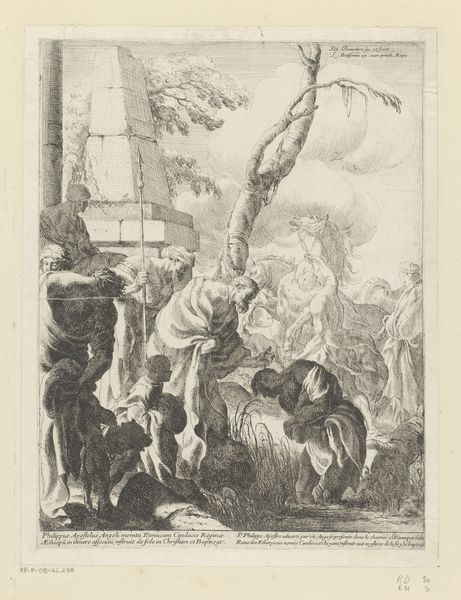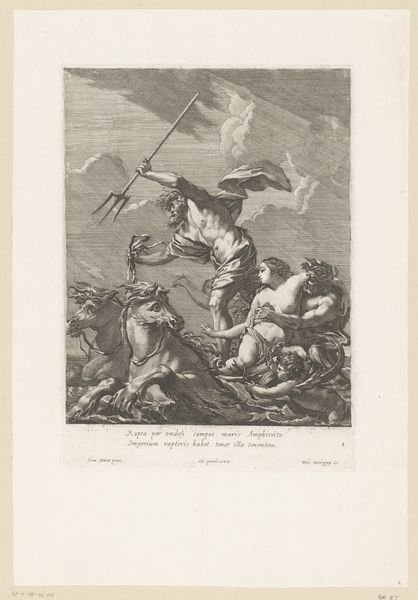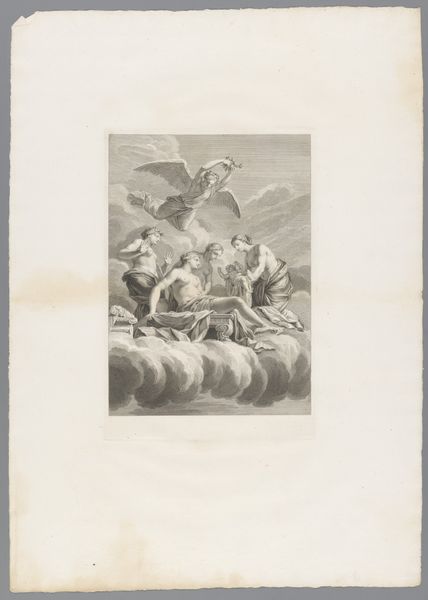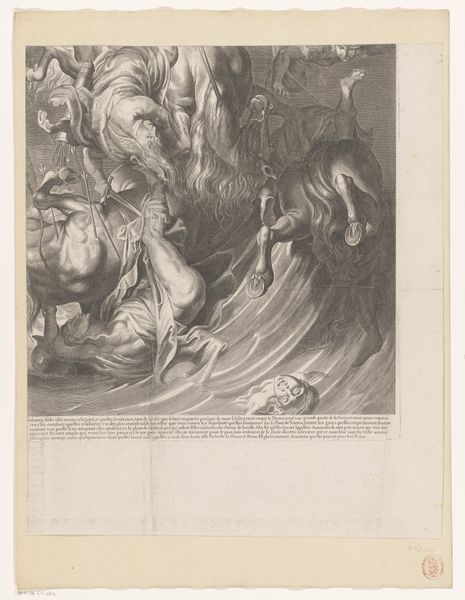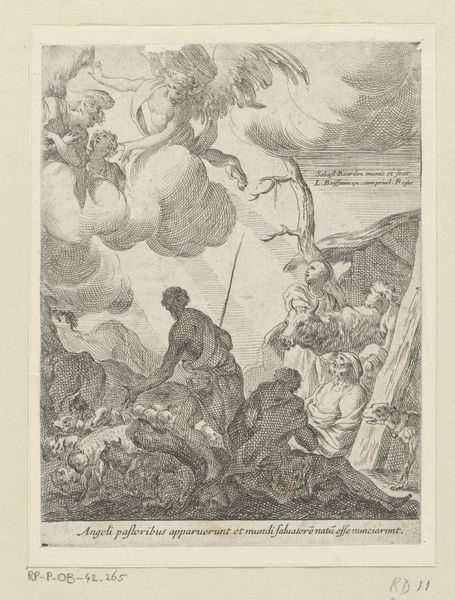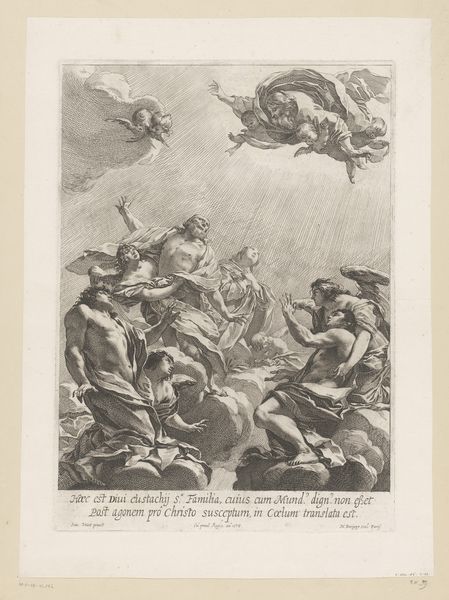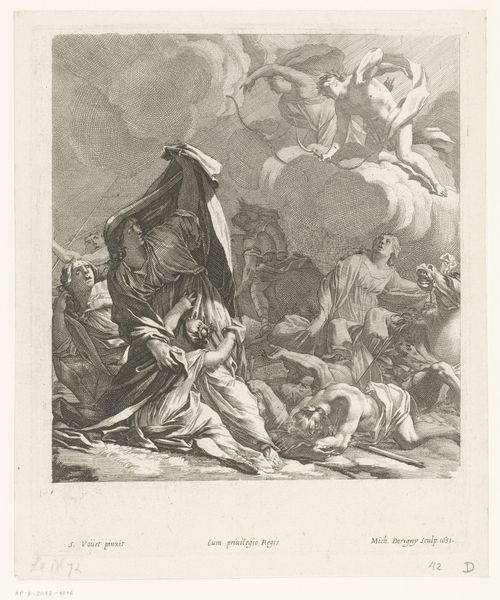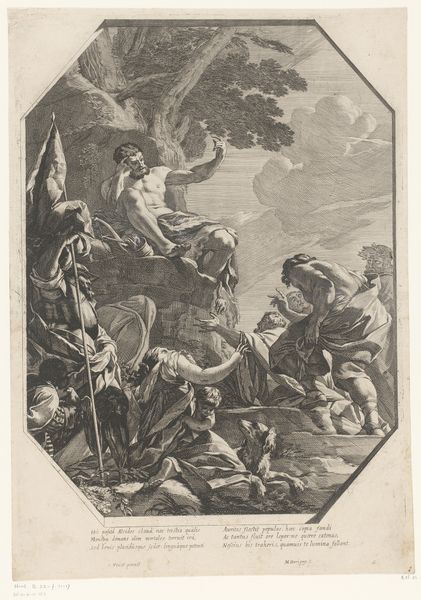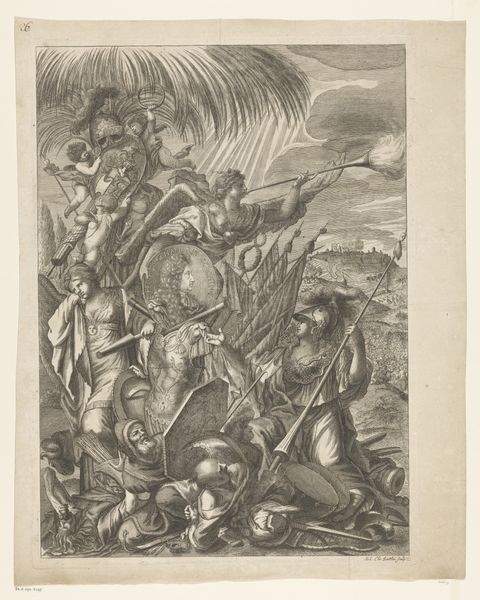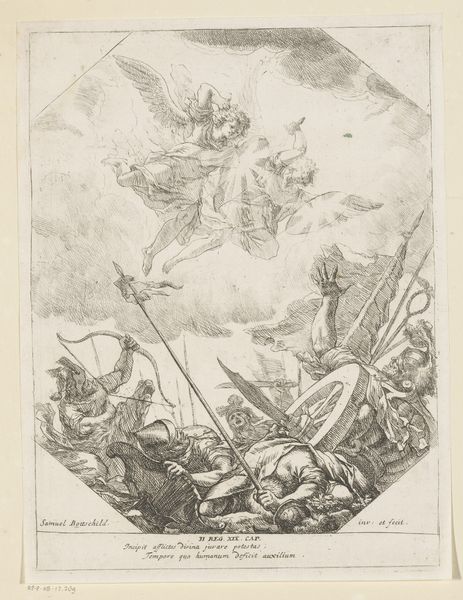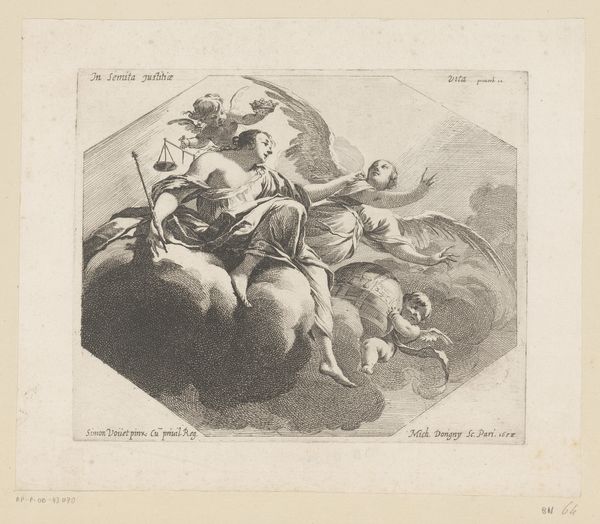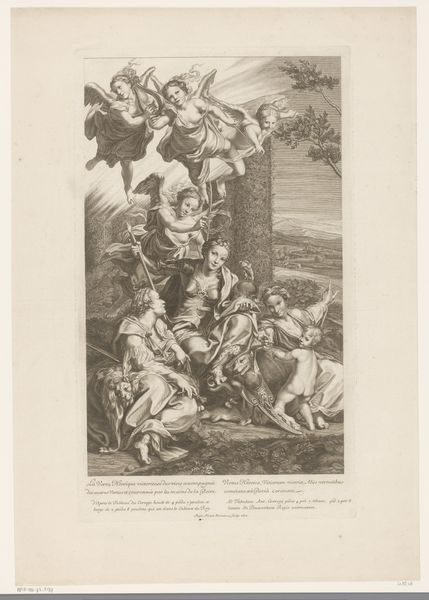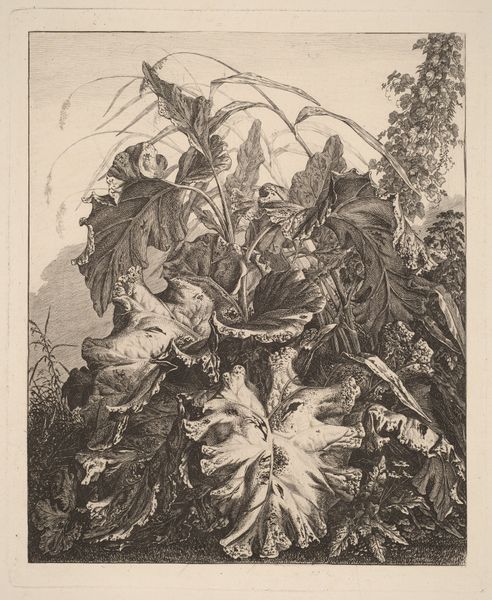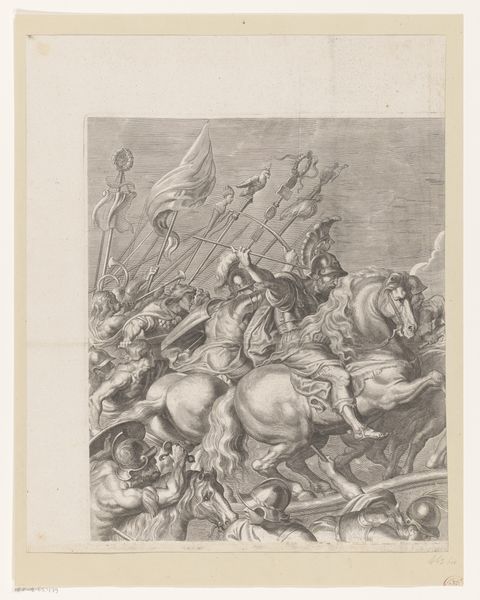
Dimensions: height 247 mm, width 164 mm
Copyright: Rijks Museum: Open Domain
This print, Aurora en Cephalus, was made in 1642 by Michel Dorigny using an engraving technique. Look closely, and you’ll see the entire composition is built from a dense network of fine lines, cut into a copper plate with a tool called a burin. The engraver would have spent hours, perhaps days, meticulously working the metal, using different pressures to achieve the subtle gradations of tone. The plate would then be inked, and wiped clean, leaving ink only in the incised lines. Pressed against paper, it would yield the image we see here. Consider that in Dorigny’s time, printmaking was an essential means of circulating images and ideas. It enabled the relatively inexpensive reproduction of artworks, accessible to a broad audience. So, while the subject may be mythological, the medium is entirely of its moment, enmeshed in the burgeoning culture of information and exchange. The artist’s labor is permanently etched in its surface.
Comments
No comments
Be the first to comment and join the conversation on the ultimate creative platform.
